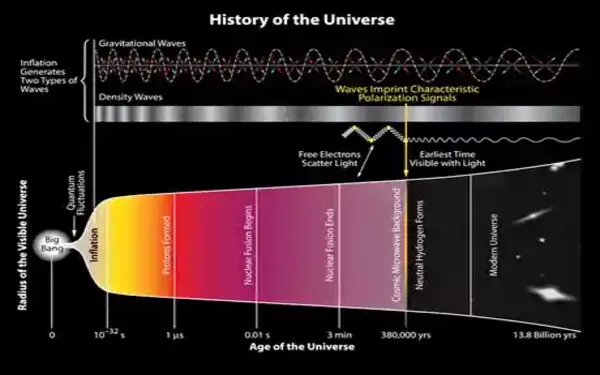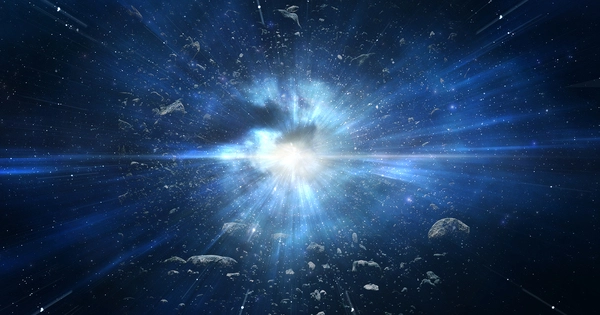Observations of gravitational waves are used in gravitational-wave astronomy to infer information about the sources of gravitational waves. Binary star systems composed of white dwarfs, neutron stars, and black holes; supernovae; and the formation of the early universe shortly after the Big Bang are examples of sources that can be studied in this manner.
Deep data analysis from the POLARBEAR Observatory probes the sky region with unprecedented precision in search of cosmological gravitational waves. Operating observatories around the world look for the imprint of Cosmological Gravitational Waves (CGWs) produced during Inflation, the mysterious phase of quasi-exponential expansion of space in the very early Universe.
A new study by the POLARBEAR collaboration, led by SISSA for the part concerning the interpretation for Cosmology and published in the Astrophysical Journal, provides a new correction algorithm that allows to almost double the amount of reliable data acquired in such observatories, thus giving access to uncharted territory of the signal produced from CGWs and bringing us closer to the Big Bang.
The POLARBEAR Observatory’s data analysis is a complex pipeline in which measurement reliability is a critical factor. “The CGWs excite only a tiny fraction of the CMB polarization signal, better known as B-modes.
Nicoletta Krachmalnicoff and Davide Poletti
“According to current cosmology, the Universe was very small, dense, and hot immediately after the Big Bang. It grew by a factor of 1030 in 10-35 seconds “Carlo Baccigalupi, coordinator of SISSA’s Astrophysics & Cosmology group, explains. “This process, known as inflation, produced Cosmological Gravitational Waves (CGW), which can be detected by polarizing the Cosmic Microwave Background (CMB), the leftover radiation from the Big Bang. The POLARBEAR experiment, of which SISSA is a part, searches for such signals with the Huan Tran Telescope in the Atacama Desert of northern Chile’s Antofagasta Region.”
The POLARBEAR Observatory’s data analysis is a complex pipeline in which measurement reliability is a critical factor. “The CGWs excite only a tiny fraction of the CMB polarization signal, better known as B-modes,” SISSA researcher Nicoletta Krachmalnicoff and Davide Poletti, who previously worked at the same institute, explain.
“They are extremely difficult to measure, owing to signal contamination caused by diffuse Galactic gas emissions. This must be removed with extreme care in order to isolate the unique contribution of CGWs.”

Anto. I. Lonappan, a PhD student at SISSA, and Satoru Takakura of the University of Boulder in Colorado have spent the last two years characterizing the quality of an extended dataset from the POLARBEAR collaboration, tracing all known instrumental and physical uncertainties and systematics.
“We implemented an algorithm that assigns accuracy to measurements in the ‘Large Patch,’ a region extending for about 670 squared degrees in the Southern Celestial Hemisphere where our sounder reveals data in agreement with other probes looking in the same location, such as the BICEP2/Keck Array located at the South Pole,” the researchers explain. The research was recently published in the Astrophysical Journal.
“This is a milestone on a long road heading to the observation of CGWs. The new approach allows us to probe the sky with unprecedent accuracy, doubling the amount of reliable data and, thus, of accessible information. This is a crucial step for the whole community now that new telescopes are being prepared for operations” the scientists add.
From an experimental standpoint, great things are on the way. The Simons Array, a system of three upgraded POLARBEAR Telescopes, is in the works. The Simons Observatory, a new system of Small and Large Aperture Telescopes funded by the Simons Foundation, will begin operations in 2023 from a nearby location in Atacama. Later this decade, the LiteBIRD satellite will launch, and an expanded network of ground-based observatories, known as “Stage IV,” with facilities in the Atacama Desert and the South Pole, will supplement these observations.
“All of these efforts will culminate in the ultimate measurement of CGWs, revealing the most important clues about the Dark Energy and Matter cosmological components at the same time,” Baccigalupi concludes. “Through SISSA’s main mission as a PhD school, training students to become young researchers, our Institute is and will be significantly contributing to the main contemporary challenges for Physics, such as the current one, targeting Gravitational Waves from a tiny fraction of a second after the Big Bang.”





